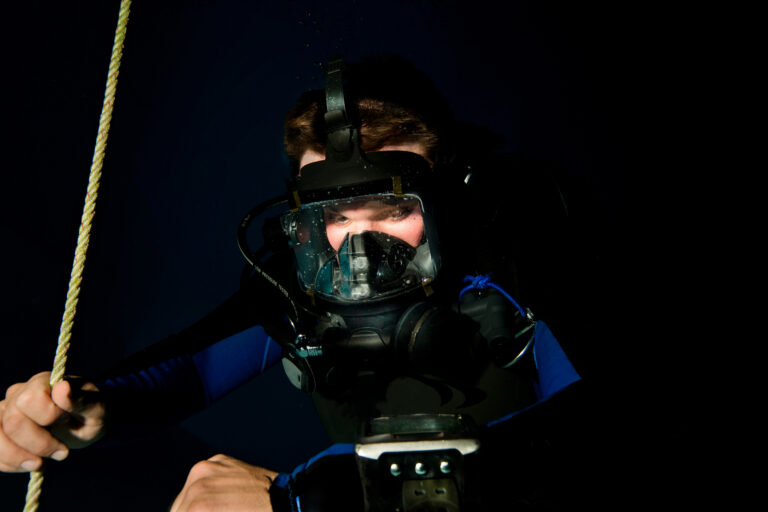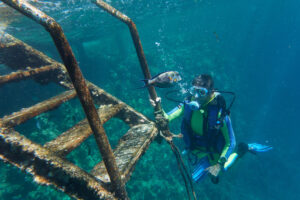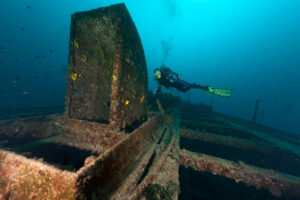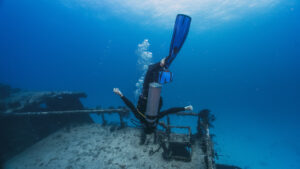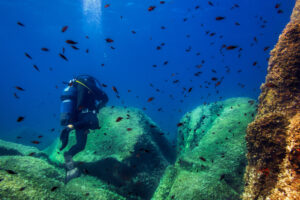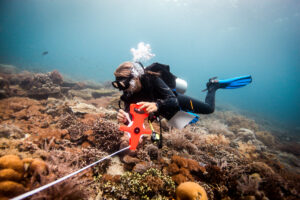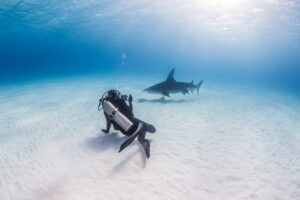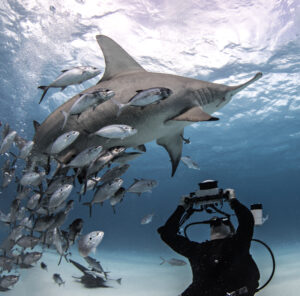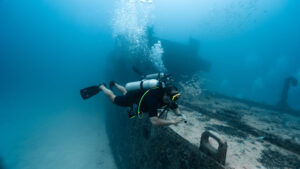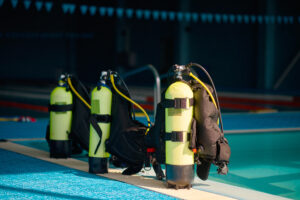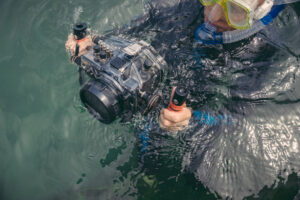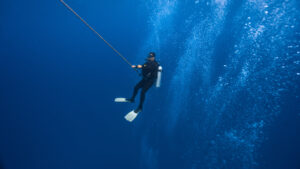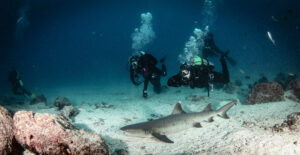What is a Faceplate?
A faceplate is a critical component in a scuba diver’s gear, providing visibility and protection while underwater. This essential piece of equipment, found on both full face masks and helmets, is typically made of glass or plastic materials. This article will explore the function and significance of the faceplate, its materials, and its evolution in scuba diving equipment.
History of the Faceplate
The concept of a faceplate dates back to early diving equipment when divers used heavy, metal helmets to descend into the depths of the ocean. These early diving helmets featured a glass faceplate that allowed divers to see underwater while maintaining a watertight seal. As diving technology advanced, the faceplate’s design was adapted to accommodate different diving equipment, including full face masks and lightweight helmets.
Materials
Glass
Glass faceplates are commonly found in both full face masks and diving helmets. They offer a high level of clarity, scratch resistance, and durability, making them a popular choice for professional divers. Tempered glass is often used for faceplates because it is more resistant to impact and can withstand higher pressures. In the event of breakage, tempered glass shatters into small, granular pieces, reducing the risk of injury.
Plastic
Plastic faceplates, typically made of polycarbonate or acrylic, are an alternative to glass faceplates. They are lightweight and shatter-resistant, making them suitable for recreational divers and snorkelers. However, plastic faceplates are more prone to scratches and may require additional care and maintenance to ensure clear visibility.
Full Face Masks and Helmets
Full Face Masks
A full face mask covers the entire face, including the eyes, nose, and mouth, providing a secure seal and allowing the diver to breathe through a regulator. The faceplate on a full face mask enables the diver to maintain clear visibility underwater and protects the eyes from contact with water or debris. Full face masks are popular among professional divers, public safety divers, and underwater photographers and videographers, as they allow for easy communication via integrated communication systems and protect the face from cold water exposure.
Diving Helmets
Diving helmets, which are less commonly used today, encase the diver’s entire head and feature a faceplate that provides visibility. These helmets are typically used in commercial diving, military operations, and underwater construction projects. The faceplate on a diving helmet is often made of glass or plastic and is designed to withstand high pressures and potential impacts from debris.
Maintenance and Care
To ensure optimal performance and safety, faceplates require regular maintenance and care. This includes cleaning the faceplate after each dive to remove saltwater, sand, or other debris that may have accumulated. Regular inspections for scratches, cracks, or other damage are crucial to maintain the integrity of the faceplate. Additionally, defogging treatments can be applied to the inner surface of the faceplate to minimize fogging during a dive.
Safety Considerations
A properly functioning faceplate is crucial for the safety and comfort of a scuba diver. A cracked or damaged faceplate can compromise the watertight seal of the mask or helmet, potentially leading to water leakage or even flooding. In extreme cases, a shattered faceplate can result in severe injury. Divers should always inspect their faceplates before each dive and replace them if any signs of damage are found.
Innovations and Advancements
As diving technology has advanced, so too has the design and construction of faceplates. Recent innovations include:
Anti-reflective Coatings
These coatings reduce glare and enhance underwater visibility, particularly in bright conditions.
Hydrophobic Coatings
By repelling water, these coatings minimize the formation of water droplets on the faceplate, improving visibility and reducing the need for defogging treatments.
UV Protection
Some faceplates now incorporate UV protective coatings or materials, shielding the diver’s eyes from harmful ultraviolet radiation and reducing the risk of eye damage.
Prescription Lenses
Divers who require corrective lenses can now opt for prescription faceplates or inserts, providing improved visibility without the need for contact lenses or ill-fitting masks.
Integrated Cameras
A growing trend in scuba diving equipment is the integration of cameras directly into the faceplate, allowing divers to capture their underwater experiences hands-free.
The faceplate is an indispensable component of a scuba diver’s gear, providing essential visibility and protection while exploring the underwater world. With advancements in materials and technology, faceplates have evolved to offer better clarity, safety features, and even integrated cameras for divers. As diving equipment continues to improve, the faceplate will remain a crucial element, ensuring a safe and enjoyable diving experience for all. Proper maintenance and care of the faceplate, along with adherence to safety guidelines, are paramount for every diver, regardless of their experience level.

